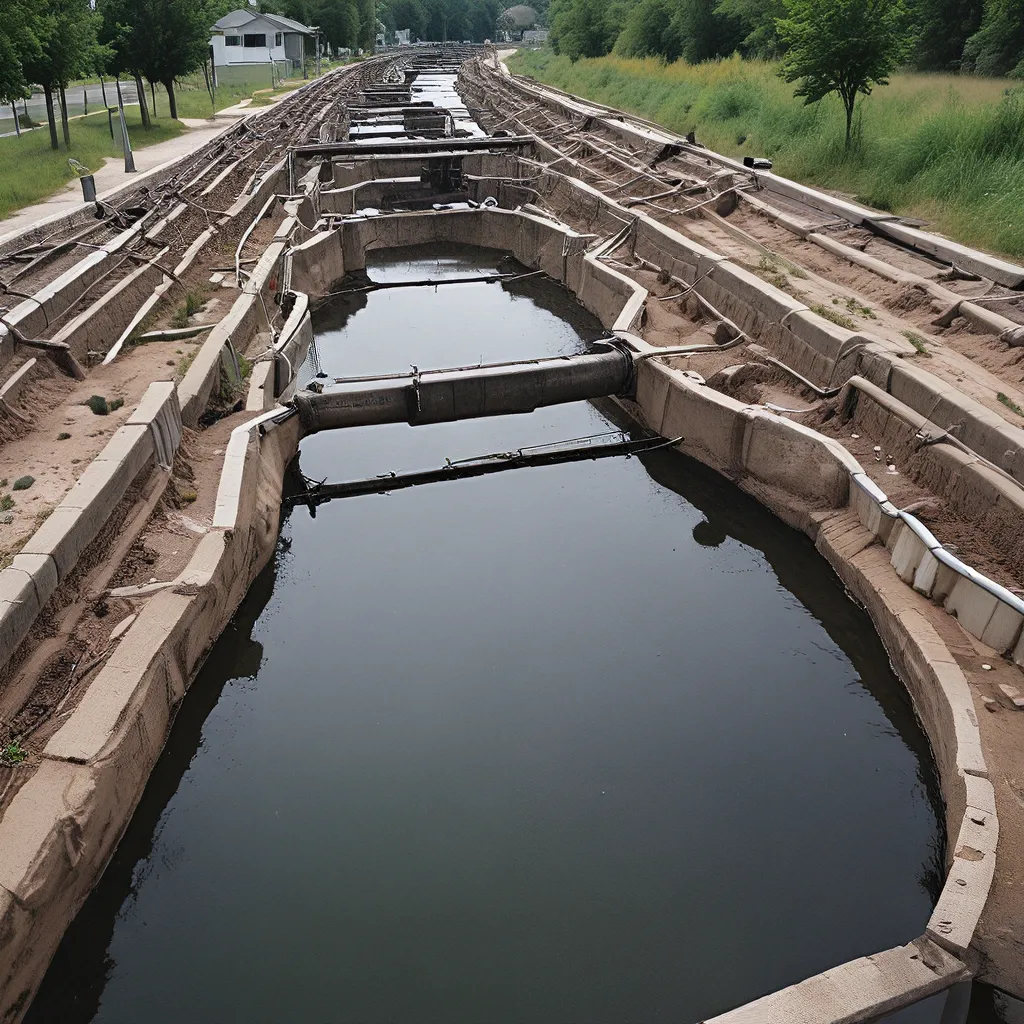
As a curious citizen, I’ve always been fascinated by the complex world of wastewater treatment and its untapped potential for public health monitoring. Imagine if we could harness the data flowing through our sewers to get a pulse on the health of our communities. That’s precisely what wastewater-based epidemiology (WBE) aims to achieve, and it’s an area of growing interest and innovation.
Unlocking the Secrets of Wastewater
Let’s start by taking a closer look at this intriguing field. Wastewater-based epidemiology is the analysis of wastewater to monitor and detect the presence of various substances, including pathogens, pharmaceuticals, and illicit drugs. By studying the chemical and biological composition of wastewater, researchers can gain valuable insights into the health and behaviors of the population served by a particular wastewater treatment plant.
Think about it – every time we flush the toilet or wash our hands, we contribute a tiny piece of information about our individual health and lifestyle choices. Now, imagine if we could collect and analyze all of those data points in a systematic way. That’s exactly what WBE aims to do, and the potential applications are truly remarkable.
Revolutionizing Public Health Monitoring
One of the most exciting aspects of WBE is its ability to provide real-time, population-level data on health trends and emerging threats. Unlike traditional public health surveillance methods that rely on individual reporting or clinical samples, WBE can capture a much broader and more representative picture of a community’s well-being.
Imagine a scenario where a new virus starts spreading through a city. Instead of waiting for people to seek medical attention and report their symptoms, WBE could potentially detect the presence of the virus in wastewater before the first clinical cases are even reported. This early warning system could allow public health officials to respond faster and more effectively to contain the outbreak.
But the applications of WBE go far beyond just disease surveillance. This innovative approach can also be used to monitor the prevalence of illicit drug use, track the consumption of prescription medications, and even detect the presence of chemical pollutants in our water systems. By integrating this wealth of data, we can gain a more comprehensive understanding of the overall health and well-being of our communities.
Navigating the Challenges of Implementation
Of course, implementing WBE is not without its challenges. One of the key hurdles is the need for standardized protocols and data integration across different wastewater treatment plants and jurisdictions. Without a consistent approach to sample collection, analysis, and data reporting, it can be difficult to draw meaningful conclusions from the data.
Fortunately, there are ongoing efforts to address these challenges. Organizations like the World Health Organization (WHO) and the U.S. Centers for Disease Control and Prevention (CDC) are working to develop harmonized guidelines and best practices for WBE implementation. This will help ensure that the data collected is accurate, reliable, and comparable across different geographic regions.
Another challenge is the need for robust data analysis and interpretation. Wastewater data can be complex and multifaceted, requiring specialized expertise to extract meaningful insights. This is where collaboration between wastewater treatment professionals, epidemiologists, and data scientists becomes crucial.
The Future of Wastewater-Based Epidemiology
As WBE continues to evolve, I’m excited to see how it will shape the future of public health monitoring and disease prevention. Imagine a world where we can proactively address health issues before they become widespread, or where we can tailor interventions to the specific needs of our communities.
Of course, the journey towards this future is not without its uncertainties and complexities. There are still many unanswered questions and areas of active research surrounding WBE. But I believe that by embracing this innovative approach and working together to overcome the challenges, we can unlock the incredible potential of wastewater data to improve the health and well-being of people everywhere.
And who knows, maybe one day your local wastewater treatment services provider will be at the forefront of this exciting field, using WBE to enhance public health monitoring and safeguard the communities they serve. The possibilities are truly inspiring, and I can’t wait to see what the future holds.